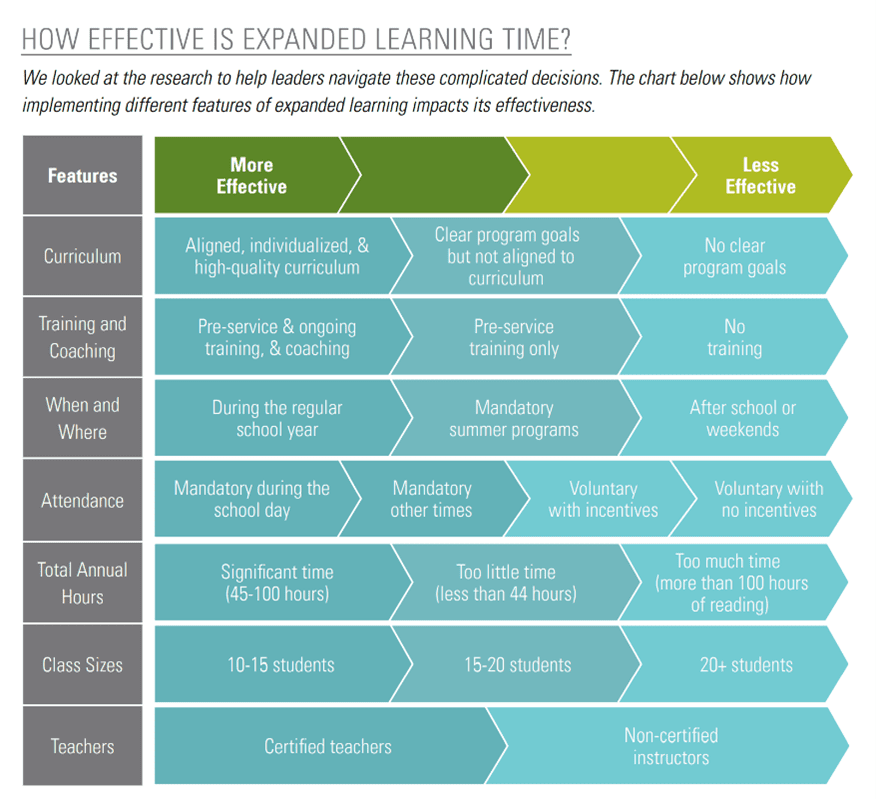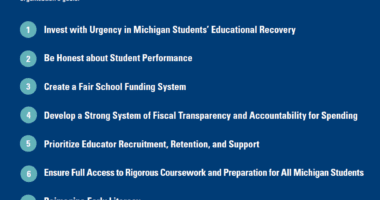
Throughout the pandemic, educators and school leaders worked tirelessly to continue providing educational opportunities for students. A March 2021 study suggested that despite best efforts, students may be five to nine months behind in achieving mastery of grade-level material, and losses are expected to be far greater on average for historically underserved student groups. In fact, students from low-income backgrounds, as well as Black, Latino, and Native students may experience six to twelve months of unfinished learning due to lacking school resources, chronic underfunding, and inadequate access to technology.
The Education Trust and MDRC’s recent brief exploring effective Expanded Learning Time strategies is a practical tool for district leaders as they seek to address the varying degrees of the pandemic’s impact and equip their students to perform at their best this fall.
Expanded learning time (ELT) refers to a variety of in-school, after-school, and summer programs that can increase instructional and learning time for students. High-quality effective expanded learning time programs have been shown to increase average student test scores by 12 percentile points, and some ELT strategies provide the equivalent of four to eight regular school months of growth.
However, simply increasing hours of instruction does not automatically guarantee improved student outcomes. District leaders should consider several factors to intentionally design efficient programming that achieves meaningful reconnection with students while pursuing academic mastery.

Evidence suggests that the most effective expanded learning time programs:
Additionally, district leaders will want to stay mindful of scheduling expanded learning time in equitable and holistically supportive ways. For instance, research shows that adding school days to the end of the year when students are eager for summer yields no benefit, while implementation is significantly more effective during the school day or through accelerated camps and summer school programs. Maintaining breaks, electives, and participation in subjects of strength also preserves student morale and engagement. Making sure that students have moments in the day to look forward to and feel successful will be especially important after a year of challenge and disconnection. Lastly, especially when providing summer and after-school programs, it’s important to ensure that scheduling does not create additional challenges for students and families already facing opportunity barriers.
The Talent Development high school model provides students with 90-minute class periods using specialized curriculum with certified teachers. Students have double blocks of core subjects like math and ELA and enjoy small “learning communities” comprised of students in the same grade. Teachers receive initial and on-going training, with 1-on-1 coaching. Altogether, the program costs $250-350 per student, per year, and results in an additional 30 minutes of math and ELA instruction every day. By the end of 9 th grade, the percentage of students earning at least one math credit increased by 11.6, the percentage earning at least one algebra course increased by 24.5, and the percentage earning at least one ELA credit increased by 8.6.
With thoughtful, intentional implementation, expanded learning time can help students achieve the mastery they missed over the last year. While it proves effective for all students, designing and scheduling programming equitably will avoid exacerbating persistent opportunity gaps and help ensure that the students most impacted by the pandemic receive what they need to thrive.

Early in 2020 when “COVID-19” was new to us, we had little indication of how severe the pandemic’s impact…